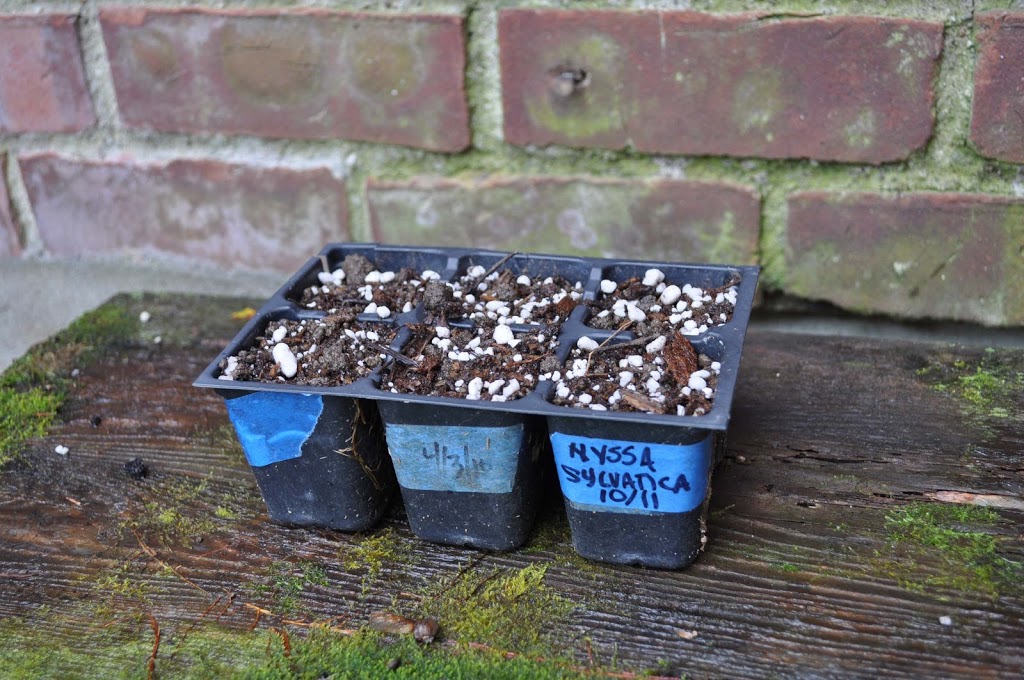MULTIPLYING PLANTS
/2 Comments/in Gardening/by Lee A. ReichIt’s a quirk, but it’s benign: When a pretty or useful tree presents seed-laden branches to me, I start conjuring up visions of whole new trees. Whole new trees that I can grow. What amazing potential is contained in such small packages! I was presented with some of these packages on a recent hike.
The date was about three weeks ago, before fall color had peaked — except for that of black tupelo (Nyssa sylvatica), also known as black gum or sour gum. This native of eastern U.S. is often planted as an ornamental for its early and striking color. The fluorescent purple, red, and yellow leaves are the first harbingers of autumn color.
Walking along the top of a rocky ridge, I came upon a tupelo lit up for autumn and presenting, within easy reach, many small, dark purple fruits. Although native, tupelo isn’t all that common around here, and trees are either male or female, with only females, of course, bearing fruit. So here was an opportunity, one not all that common.
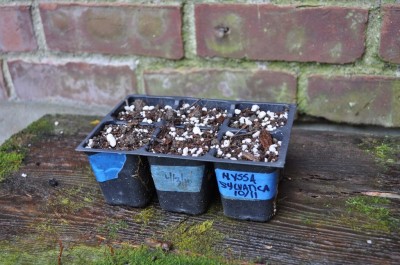 |
| Six tupelo trees for the future |
I could leave the flat outside, in which case the seeds will probably sprout around April. In the refrigerator, constantly chilly, the seeds would get off to an earlier start, probably sprouting in February. The seedlings will need transplanting into deeper containers or outdoors soon after sprouting because tupelo tends to develop deep tap roots.
Most trees are very easy to grow from seed. The hard part comes later: Figuring out what to do with all the seedlings.
——————————————-
I recently contended that no one, or I, at least, would eat any other pear as long as ripe Magness pears were available. How foolish. Over 5000 varieties of pears exist. Could anyone really declare that just one of those would surpass so dramatically all others or that an occasional variation in pear flavor would not be welcome?
Fortunately, I had some other home-grown varieties waiting in the wings. Vermont Beauty — sweet and juicy, with a bit of spiciness — was just what was needed to relieve week after week of sweet and juicy, smooth-flavored Magness. Almost as good was the variety Frederick Clapp although lack of top notch quality in this case could be due do less than perfect harvest timing or after-ripening.
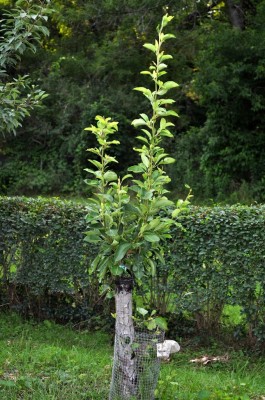 Seckel is one variety that definitely would have measured up against Magness. Unfortunately, the last of the Seckel pears, which are small, sweet, and very spicy, are long gone. Triomphe de Viene pears are still to come, after a few more weeks of refrigeration; this is the trees’ first year bearing fruit in my garden.
Seckel is one variety that definitely would have measured up against Magness. Unfortunately, the last of the Seckel pears, which are small, sweet, and very spicy, are long gone. Triomphe de Viene pears are still to come, after a few more weeks of refrigeration; this is the trees’ first year bearing fruit in my garden.And next year . . . Beurée d’Amanlis, Aurora, Warren, Tyson, Rescue, and more should bear fruit. I have it on good authority that Flemish Beauty is another pear variety worth adding to the collection.
Where to put all these pear trees? I have two approaches. I lop the top off any pear variety that’s not up to snuff and graft onto the remaining stump a new, better variety. Alternatively, I graft a branch of one of these better varieties on a branch of an existing pear tree, so the resulting tree then hosts two — or more — varieties. One old tree hosts about eight varieties.
I highly recommend pears as backyard trees for their spring blossoms, their glossy leaves in summer, their luscious fruits, and — in contrast to apples — their relative freedom from insect and disease problems.
—————————————-
Tree seedlings and pear varieties aren’t the only things multiplying around here. Some orchid cactii grow too large so their fleshy stems need to be cut back occasionally. And, the fleshy stems are easy to root. So how could anyone resist making more plants?
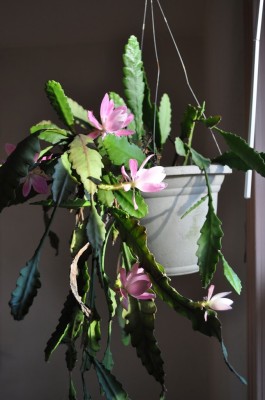 All that’s needed is to stick the bottom ends of the stems in potting soil in bright light and then water thoroughly each time the soil gets bone dry. The upshot of this is that now I have many orchid cactii hanging around the house.
All that’s needed is to stick the bottom ends of the stems in potting soil in bright light and then water thoroughly each time the soil gets bone dry. The upshot of this is that now I have many orchid cactii hanging around the house.The one downside to orchid cactii is that they typically bloom only once a year, usually in early spring. As a capper to our very strange growing season (early warming in spring followed by alternating periods of excessively droughty and excessively rainy weather followed by the torrential rains of hurricane Irene followed by a long, warm autumn), one of my orchid cactii is now in bloom. Jumping on the bandwagon is another plant, a true orchid, Odontoglossum pulchellum. I notice a flower stalk developing. In its 20 years here, blooms always arrived in February.
SWEET POTATO FOOTBALL & PEARS GALORE
/1 Comment/in Gardening/by Lee A. ReichLance the Plumber is also quite a good gardener; I’ve seen his garden. So I had some faith in his recipe for growing sweet potatoes: Make a circle of fencing a couple of feet across, fill it with soil, and plant. The raised cylinder of soil, being warmer than soil at ground level, would be much to the plants’ liking.
 I eat a lot of sweet potatoes but have never grown them because summer weather here in the Hudson Valley isn’t quite warm enough for best yields and because the trailing vines take up a lot of space. Still, Lance’s method seemed worth a try — with some “leafy” modifications.
I eat a lot of sweet potatoes but have never grown them because summer weather here in the Hudson Valley isn’t quite warm enough for best yields and because the trailing vines take up a lot of space. Still, Lance’s method seemed worth a try — with some “leafy” modifications.Every autumn I get truckloads of leaves dumped at a holding area where they sit to let snow, rain, heat, and time reduce the volume and bring about decomposition to create an ideal mulch. I spread that mulch the following autumn. (Freshly fallen leaves are also a good mulch but tend to blow and are too fluffy for easy handling.) So, methinks, “That leaf pile just sits there from spring through autumn; why not plant sweet potatoes right into the pile in spring?” It was worth a try even though sweet potatoes don’t like soils having abundant fresh organic matter. The leaf pile was pure organic matter!
I tried this on a small scale last year. Mice ate the potatoes which, anyway, were few because I got the plants in late and sweet potatoes are a long season crop. I did salvage cuttings from the vines, which root easily, and carried them over last winter on a window sill to make plants for this year.
This year’s leaf pile was further from the stone wall that mice evidently call home, and potted plants went into compost-filled holes hollowed out into the pile. All summer the vines grew, and grew, and grew. Frost, anathema to sweet potatoes, is imminent so yesterday I decided it was time to start grubbing into the pile to look for sweet potatoes. I found a few small and medium-sized tubers, one of which had been gnawed by mice. Not very encouraging.
Wandering past the pile a couple of hours later, I spied what looked like a large butternut squash starting to emerge from the pile. It was, in fact, a giant sweet potato tuber, a couple of feet long and a few inches across, that had formed where the vine had rooted as it sped along atop the leaf pile. Then I found another humongous tuber. And another, as well as some rationally sized ones. Success. I can’t wait to show them to Lance.
—————————————————-
For a variety of known and unknown reasons, this year was good for pears. Not just here, but generally in the northeast, at least judging from reports from a number of people. Spring weather was ideal for pollination, with no late frosts once weather started to warm. I had a number of varieties in bloom so cross-pollination was good. And for some reason, despite alternating periods of rain and drought followed by too, too much rain, the crop developed and ripened nicely.
Of all the pears I grow, the best-tasting is the variety ‘Magness’. It takes awhile to begin fruiting and then doesn’t yield well or consistently, or keep very well. But when ‘Magness’ is available, there’s hardly reason to eat any other pear. (Except for ‘Comice’, which is the pear usually grown in the Pacific northwest and packed into fancy fruit gift boxes; ‘Comice’ allegedly doesn’t grow well in the northeast. ‘Comice’ is one parent of ‘Magness’.) My two ‘Magness’ trees bore abundantly this year, I harvested the fruits just as the first pear dropped, kept them refrigerated for about a month, and now eat them after a day at room temperature. The flesh is juicy, sweet, and perfumed.
Anyone planning to grow this excellent variety needs to provide for for cross-pollination. ‘Magness’ is pollen-sterile and can’t pollinate anything else so three different varieties are needed to be able to pick fruit from all three trees.
——————————————————-
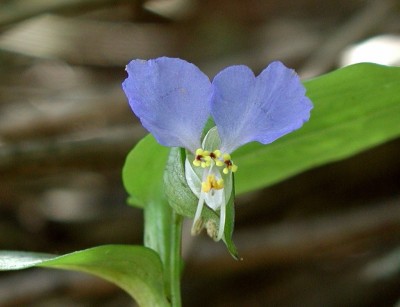 What an honor it would be to have a plant named after you. I was fortunate, many years ago when I worked in the USDA Fruit Laboratory in Maryland, to meet Dr. Magness, for whom ‘Magness’ pear was named. He had retired as chief of the Fruit Laboratory. And there was the Canadian farmer, John McIntosh, who discovered the tree that became his namesake variety two hundred years ago. ‘Macoun’ apple was bred here in New York, a deliberate hybrid of ‘McIntosh’ and ‘Jersey Black’ that was named, in 1923, after Canadian fruit grower W. T. Macoun. And so on.
What an honor it would be to have a plant named after you. I was fortunate, many years ago when I worked in the USDA Fruit Laboratory in Maryland, to meet Dr. Magness, for whom ‘Magness’ pear was named. He had retired as chief of the Fruit Laboratory. And there was the Canadian farmer, John McIntosh, who discovered the tree that became his namesake variety two hundred years ago. ‘Macoun’ apple was bred here in New York, a deliberate hybrid of ‘McIntosh’ and ‘Jersey Black’ that was named, in 1923, after Canadian fruit grower W. T. Macoun. And so on.How about having a weed as your namesake? I’d even take that, with reservations. One weed that comes to mind because it’s still spreading as if it was high summer is Asiatic dayflower. Actually, it’s quite an attractive plant, with arrow-shaped, succulent leaves that clasp the decumbent, fleshy stems. The genus, Commelina, is characterized by flowers with two prominent, sky blue petals that pay homage to two similarly prominent brothers, 18th century Dutch botanists Johann and Caspar Commelin.
Look closely at the flowers, though, and you’ll see that in addition to the two prominent, blue petals, each flower also has an insignificant, minuscule, white petal. There was also a third brother.
PAWPAW TALK & GLICKSTER VISIT
/13 Comments/in Gardening/by Lee A. Reich Deep in the hills of West Virginia, at the end of a steep, gravelly driveway, is where I found Glicksterus maximus. Sounds like a plant, doesn’t it? It’s not. It’s the self-ascribed nickname for Barry Glick of Sunshine Farm and Gardens (www.sunfarm.com), a mail-order nursery offering oodles of species and varieties of mostly herbaceous plants, many of them obscure and many of them native. I’d spoken with Barry, I’d planted his plants, and I’d sat on the receiving end of one of his entertaining and informative lectures, but I’d never visited his nursery/home. My own speaking engagement last week at the International Master Gardener’s Conference in Charleston, WV afforded me the opportunity for this visit.
Deep in the hills of West Virginia, at the end of a steep, gravelly driveway, is where I found Glicksterus maximus. Sounds like a plant, doesn’t it? It’s not. It’s the self-ascribed nickname for Barry Glick of Sunshine Farm and Gardens (www.sunfarm.com), a mail-order nursery offering oodles of species and varieties of mostly herbaceous plants, many of them obscure and many of them native. I’d spoken with Barry, I’d planted his plants, and I’d sat on the receiving end of one of his entertaining and informative lectures, but I’d never visited his nursery/home. My own speaking engagement last week at the International Master Gardener’s Conference in Charleston, WV afforded me the opportunity for this visit.Let’s cut right to the chase: Barry’s deepest affections go to one genus, Helleborus. And hellebores, as they are commonly called, were everywhere. (The plants are also called Christmas rose or Lenten rose although the blossoms do not really resemble roses and the plants do not necessarily bloom at Christmas or Lent.) Steep slopes beneath towering maples and oaks were blanketed with verdant carpets of thousands of hellebore plants. Many of these plants were seed plants for Barry’s breeding program. In addition to selling thousands of hellebores, Barry also has developed some new varieties.
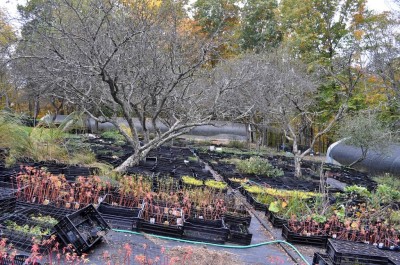 I had fun trying to identify some of the other plants tucked here and there all over the place, or lined out by the hundreds in pots. Ligularia was easily identified by its tall, straight, upright flower stalk even though its yellow flowers were long past. Rather than the familiar Ligularia ‘The Rocket’, Barry grows Ligularia sachalinensis. Fringetree (Chionanthus virginicus), a small tree whose branches burst with fringed, white blooms in spring, gracefully spread its branches; I brought home a small plant. As we walked up and down the hilly landscape past myriad plants, Barry called out their botanical names
I had fun trying to identify some of the other plants tucked here and there all over the place, or lined out by the hundreds in pots. Ligularia was easily identified by its tall, straight, upright flower stalk even though its yellow flowers were long past. Rather than the familiar Ligularia ‘The Rocket’, Barry grows Ligularia sachalinensis. Fringetree (Chionanthus virginicus), a small tree whose branches burst with fringed, white blooms in spring, gracefully spread its branches; I brought home a small plant. As we walked up and down the hilly landscape past myriad plants, Barry called out their botanical namesOne particularly attractive tree that I found impossible to identify was a mature sweetgum (Liquidambar styraciflua). Rather than sweetgum’s characteristic, five-pointed, star-shaped leaves, Barry’s tree, the variety ‘Rotundifolia’, had leaves with friendly-looking, rounded lobes. This variety is sterile, so also couldn’t be identified by the species rounded, spikey fruits commonly known by such names as “gumballs,” “burr balls”, “bommyknockers”, or “conkleberrys.”
——————————————-
We can’t just leave hellebores hanging a few paragraphs back. I also am a big fan of most of this genus, and am the proud grower, for 8 years now, of some of Barry’s creations. One asset of hellebores, mentioned previously, is their verdant foliage; I didn’t mention, though, that the leaves stay green all winter. This far north, I value anything green in our mostly achromatic winter landscape.
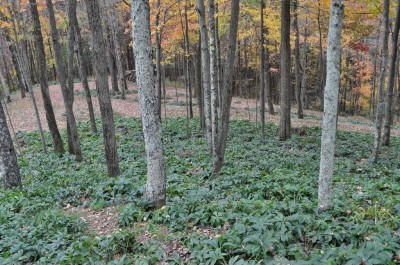 Another plus for this genus is that deer leave the plants alone. And that the plants thrive in partial shade. And that they self-sow to make new seedlings as well as spread vegetatively. They do so with enough restraint to never become a bother or, worse, invasive.
Another plus for this genus is that deer leave the plants alone. And that the plants thrive in partial shade. And that they self-sow to make new seedlings as well as spread vegetatively. They do so with enough restraint to never become a bother or, worse, invasive.While the flowers do not look like rose blossoms, they are beautiful, in colors from white to white suffused with purple to purple, and sometimes pale green.Wait, that’s not all! The flowers start blooming very early in spring, typically in March in my garden, and then continue to bloom for weeks and weeks.
———————————————
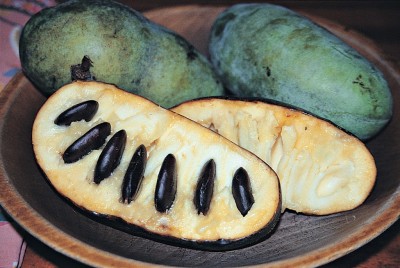 One of my lecture topics at the master gardener conference was “Landscaping with Fruit,” and one of the premier dual-purpose plants that I touted was pawpaw (Asimina triloba). The tree has a neat, pyramidal form and all season long sports large, lush, healthy green leaves that lend a tropical air to the landscape. It’s a tree that you can plant (plant two, for cross-pollination), give some care to get it growing, and then year after year harvest fruit without giving a second thought to pests or pruning. Even deer usually leave mature trees alone.
One of my lecture topics at the master gardener conference was “Landscaping with Fruit,” and one of the premier dual-purpose plants that I touted was pawpaw (Asimina triloba). The tree has a neat, pyramidal form and all season long sports large, lush, healthy green leaves that lend a tropical air to the landscape. It’s a tree that you can plant (plant two, for cross-pollination), give some care to get it growing, and then year after year harvest fruit without giving a second thought to pests or pruning. Even deer usually leave mature trees alone. 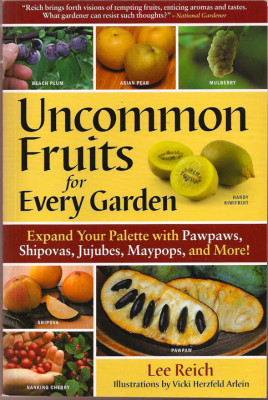 In addition to those lush leaves, pawpaw has other tropical aspirations. It is the northernmost member of the mostly tropical custard apple family. Each flower is a multiple ovary so can yield a cluster of up to nine fruits, similar to clusters of bananas except that pawpaws are shaped like and about the size of mangoes.
In addition to those lush leaves, pawpaw has other tropical aspirations. It is the northernmost member of the mostly tropical custard apple family. Each flower is a multiple ovary so can yield a cluster of up to nine fruits, similar to clusters of bananas except that pawpaws are shaped like and about the size of mangoes.Most tropical is the flesh itself of this cold-hardy, native fruit. Pawpaw flesh is creamy and yellow, like banana. What’s more, it has flavor that also is similar to banana along with some mango, pineapple, and avocado mixed in; or vanilla custard; or creme brulee.
Pawpaw trees shed their tropical aspirations in autumn, about now, when the leaves turn a clear, bright yellow and then drop. That’s also when the fruit ripens; I’m presently inundated with this easy-to-grow “tropical” fruit.
(I devote a whole chapter to pawpaw in my book Uncommon Fruits for Every Garden.)

